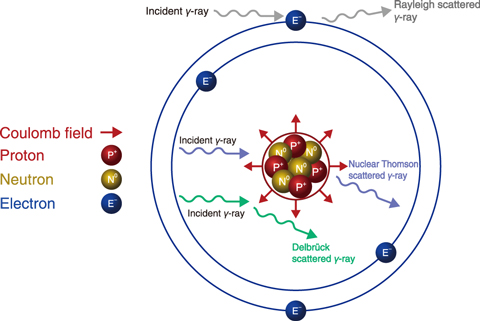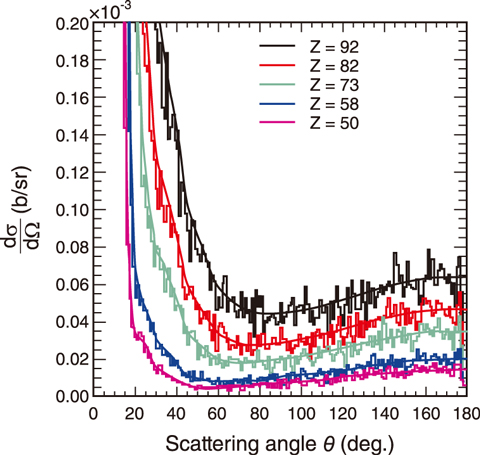
Fig.10-2 Schematic of γ-ray interactions in competition with the NRF

Fig.10-3 Differential cross section of 2.7 MeV γ-rays elastically scattered by different elements
ISCN is developing technologies using a nuclear resonance fluorescence (NRF) method relevant to the nondestructive detection and assay of nuclear materials for nuclear safeguard and safety purposes. In this method, isotope-characteristic γ-rays emitted in NRF are measured using high-energy γ-rays that can penetrate a considerably thick and heavy shielding.
Only NRF γ-rays are taken into account when measuring highly enriched material. However, several materials are included in one sample, the effects from each material must be considered. For example, a typical nuclear fuel pellet contains about 90% of the host material 238U and less than 1% of 239Pu, an isotope of interest. When measuring the NRF of 239Pu, a considerable background would be detected due to the elastic scattering by 238U. Therefore, an estimation of the elastic scattering caused by the host material is essential for precise determination of an isotope of interest.
The interfering interactions include the elastic scattering of γ-rays from Rayleigh, nuclear Thomson, and Delbruck scattering as shown in Fig.10-2. Whereas Rayleigh scattering and nuclear Thomson scattering involve interactions between electrons and nuclei, Delbruck scattering represents a scattering of photons in a virtual Coulomb field produced by the nucleus and occurs more often in high-Z nuclei such as Pb and U which cause strong electric fields outside the nuclei.
Current methods of estimating elastic scattering are insufficient, as they do not include Delbruck scattering. Therefore, a model was developed to account for scattering events caused by interactions other than NRF interactions. This allows the on-beam background to easily be estimated by the simulation. The developed simulation considers three different scattering process as shown in Fig.10-2. The differential cross sections of these three processes were superimposed to account for the integrated effect of the on-beam background. The simulation code was implemented in the Geant4 framework. An example of the simulation is shown in Fig.10-3. The simulation can satisfactorily account for the on-beam background encountered in NRF measurements for several materials with different Z-values.
Based on these developments, elastic scattering γ-ray backgrounds can be accurately determined. Furthermore, the developed simulation code can be used for the evaluation of detector geometry to reduce the backgrounds. Future work will involve the investigation of the effect of photon polarization on the elastic scattering cross section.
This may help decrease the effect of the on-beam background by selecting appropriate scattering geometries.
This study was sponsored by the Ministry of Education, Culture, Sports, Science and Technology (MEXT), Japan.
<Previous: 10 Development of Science & Technology for Nuclear Nonproliferation | Next: Research Field Index>